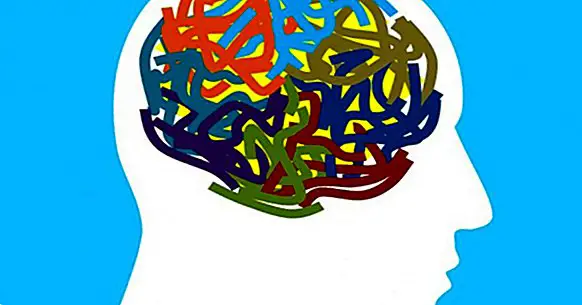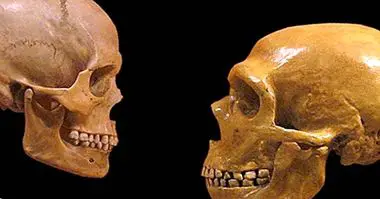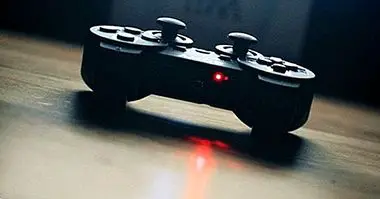Lewis's theory of active and inactive memory
Although memory has been researched scientifically for approximately 130 years, perhaps the most relevant discovery to date is that memory is much more complex than anyone could ever imagine. Next, we will talk about one of the most unnoticed theories that have passed through the history of the study of this brain process and that, nevertheless, could be closer to its real functioning: Lewis's theory of active and inactive memory .
- Related article: "The 8 superior psychological processes"
What is memory?
Traditional theories, and mostly accepted by the scientific community, postulate that memory is a basic cognitive process that is divided into two types .
A short-term memory, located in the prefrontal cortex, which allows us to manipulate information from the external or internal environment (our mind) and has a limited capacity; and a long-term memory, located in the hippocampus and temporal lobe, of unlimited nature and that stores information permanently.
On the other hand, these traditional theories also point out that so that the formation of new memories takes place , these have to go through a period of instability in which they can undergo modifications, but once they reach the long-term memory, they remain unchanged.
However, at the end of the 1960s, several groups of researchers (including Lewis), investigating the phenomenon of amnesia in rats, observed effects that could not be explained by traditional memory theories.
They saw that memories consolidated in long-term memory they could be forgotten if a series of conditions were met . Based on this effect, in 1979 Lewis proposes an alternative theory.
- You may be interested: "The 6 levels of loss of consciousness and associated disorders"
Lewis's theory of active and inactive memory
The author postulates that there are no types of memory, but that memory is a dynamic process composed of two states : an active state where all memories, both new and consolidated, could undergo modifications and be forgotten, and an inactive state where all memories remain stable.
That is to say; active memory would be composed of changing subsets of all memories of the organism that affect our present behavior, and inactive memory would be formed by all those permanent memories, which have the potential to be activated at some time, which are in a state of relative inactivity and have little or no effect on the present behavior of the organism.
In addition, it went a step further, arguing that memory does not have specific locations within the brain , but it is a central processor that is subordinated to other basic processes such as perception and attention. An active memory is a unique neuronal firing pattern. Different activated memories would reflect different patterns of neuronal density and would not have a specific location.
The student's example
The following example will allow a greater understanding of this theory:
A university student has just come out of a procedural law examination and is remembering the answers he gave based on what he studied (subset of permanent memories and unconsolidated memories that are active at that moment) when he suddenly passes in front of a bakery and a smell of food invades him and makes him remember the menu he will make when he gets home (the smell perception directed attention to the food, which in turn triggered a permanent reminder of the menu of the day that until that moment was inactive).
As can be seen, and as Lewis put it, "active memory is intuitively apparent to immediate consciousness". Consciousness is defined as the individual's ability to recognize the reality that surrounds him , relate to it and reflect on it and on yourself.
Recovering this model
However, this theory was quickly rejected at that time due to its highly speculative assumptions and the lack of a solid empirical contrast. 40 years later, each new finding in the field of memory could be related directly or indirectly to Lewis's work. In the year 2000, Nader, Schafe and Le Doux argued that new memories should be called active memories . Sara, in the same year, urged the entire scientific community to consider memory as a dynamic process.
In 2015, Ryan, Roy, Pignatelli, Arons and Tonegawa, among others, affirmed that each memory is a characteristic neuronal firing pattern (currently called cellular engrams).These same authors also conjectured in favor of another hypothesis of Lewis, which postulates that amnesia is not a destruction of the memory, but an inability to recover it, that is to say; an inability to activate an inactive memory.
Bibliographic references:
- Lewis, D. J. (1979). Psychobiology of active and inactive memory. Psychological bulletin, 86 (5), 1054-1083. doi: 10.1037 / 0033-2909.86.5.1054
- Nader, K., Schafe, G. E., and Le Doux, J. E. (2000). Fear memories requires protein synthesis in the amygdala for reconsolidation after retrieval. Nature, 406 (6797), 722-726. doi: 10.1038 / 35021052
- Sara, S. J. (2000). Retrieval and reconsolidation: towards a neurobiology of remembering. Learning & Memory, 7 (2), 73-84. doi: 10.1101 / lm.7.2.73
- Ryan, T. J., Roy, D. S., Pignatelli, M., Arons, A., and Tonegawa, S. (2015). Engram cells retain memory under retrograde amnesia. Science, 348 (6238), 1007-1013. doi: 10.1126 / science.aaa5542



















